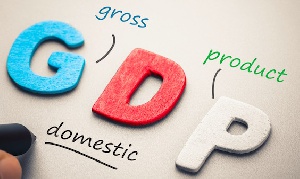In 2016, the issue about debt stock and debt to GDP ratio were important part of public financial and economic management discourse in Ghana.
Discussions about the economy is still focused on these metrics because of the current position that it is possible to borrow to improve both the debt stock and the debt to GDP ratio of the country.
Though economic data is useful to politicians and they may quote such data from time to time either in assessing government performance (i.e. opposition political parties) or in defending economic performance (i.e. government), it must be verified from mandated independent institutions created by law such as the Bank of Ghana and Ghana Statistical Service.
For instance, in June 2017, the first quarter economic data released by the Bank of Ghana indicated that the GDP at the end of 2016 was GH¢167.3 billion, while the projected GDP for the year ending 2017 is GHc203.4 billion.
The data further revealed that the debt stock (total debt) by the end of first quarter of 2017 is GHc127.1billion indicating that the debt stock increased by GHc4.5 billion . It is therefore not correct to put in the public domain that the government is borrowing but the debt stock is not increasing.
The fact that current borrowing retires or refinances old debt does not lead to reduction of the debt stock. The only way to reduce the debt stock is to generate enough revenue to repay our debt obligation and moderate borrowing.
This is the reason why debt to GDP ratio maybe a misleading measures for Ghana, because while debt imposes actual cash payment or its equivalent, GDP is a notional measure that promises to generate revenue for repayment of debt.
Thus, huge GDP growth is very good for the economy but GDP growth that does not generate the needed revenue and jobs is unproductive. The implication is that since the first quarter revenue target was not met and same is expected of the second quarter any improvement in GDP does not necessarily reduce the debt burden of the country, especially when the $2.25billion (GH¢ 10billion) is added to the debt stock in the second quarter.
The fact is that the projected interest cost of accumulated debt is captured in the 2017 is GHc14 billion. Further implication is that if the projected Debt to GDP ratio of 71.7% is achieved at the end of 2017 in the face of poor revenue performance there will not be improvement in the debt burden of the country. In fact borrowing to retire old debts only means changing your creditors and repayment periods.
For instance, if Ghana borrowed cumulatively from different creditors $30billion and we borrow $ 40billion today (this does not mean Ghana has borrowed only $40billion) from BAA Financial House with maturity of fifteen years(15yrs) and use it to pay off the old indebtedness of $30billion.
Our current indebtedness is $40billion plus any interest Cost and not $10billion this is irrespective of any improvement in debt to GDP ratio. However, without retiring old indebtedness the total debt would be $70 billion. The fact that the debt is not $70billion because of the retirement or payment of the old debt does not in any way mean reduction in debt stock.
As a country our strategy should combine improvements in productivity and creativity to enhance the revenue envelop. If we significantly improve on sustainable revenue mobilization, high debt to GDP ratio will actually not be a threat to economic management, though moderate Debt to GDP ratio is even better.
By Dr. John Gatsi|Department of Finance , School of Business|University of Cape Coast
Business News of Sunday, 23 July 2017
Source: 3news.com













